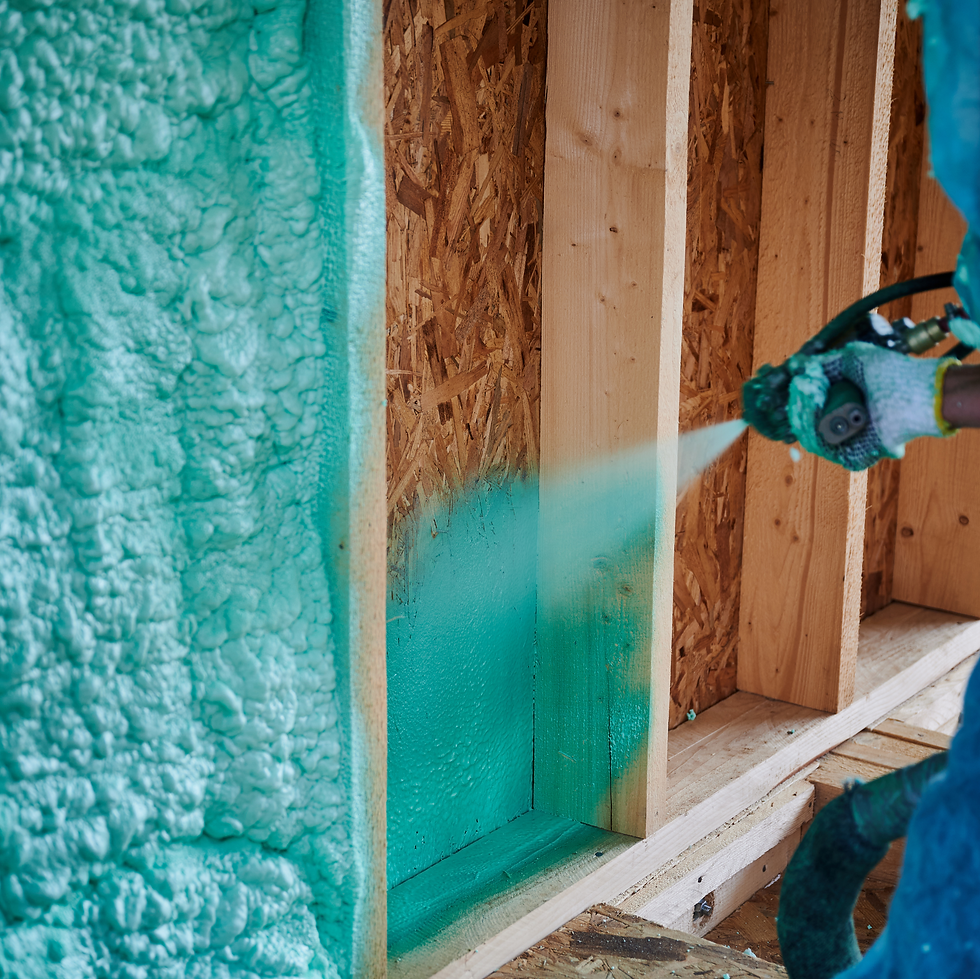The Role of Spray Foam in Pest Control: Sealing Entry Points Naturally
- Innovative Insulation

- 6 days ago
- 3 min read

Table of Contents
Why Pests Target Your Home
Common Entry Points for Rodents and Insects
How Spray Foam Seals Out Pests
Benefits Beyond Pest Control
Commercial Applications for Pest Prevention
Comfort and Protection in One
Why Pests Target Your Home
Rodents, ants, spiders, and other pests aren’t just an annoyance — they’re often looking for shelter, warmth, food, and water. Once inside, they can cause structural damage, contaminate food, and even trigger health problems. Traditional pest control methods often focus on removing pests after they enter, but the most effective solution is stopping them at the source.
Common Entry Points for Rodents and Insects
Even the smallest gaps can act as doorways for pests:
Cracks in foundations or basement walls
Gaps around pipes, vents, or utility lines
Attic openings and roof intersections
Spaces around windows and doors
Rodents can fit through surprisingly small openings — as small as a pencil-width hole (~¼ inch) — and seals around pipes and vents should not be overlooked.
How Spray Foam Seals Out Pests
Spray foam insulation works differently than traditional materials. When applied, it expands to fill cracks, seams, and gaps — the same tiny openings pests use to enter your home. Rodents and insects are opportunists; if there’s even a small hole around plumbing, wiring, or foundation joints, they’ll find a way in.
Unlike fiberglass batts or cellulose, which pests can easily push aside or burrow through, spray foam cures into a dense, rigid barrier. Rodents can’t chew through it easily, and insects can’t slip past the sealed edges. This makes spray foam one of the most effective ways to block entry points naturally, reducing the chance of infestations before they start.
Benefits Beyond Pest Control
The pest-blocking benefits of spray foam are just the beginning. By tightly sealing your home, spray foam also:
Improves Energy Efficiency – Prevents heated or cooled air from escaping, reducing utility bills by up to 30–50%.
Controls Moisture – Acts as a barrier against humid air that can condense inside walls, reducing the conditions pests and mold thrive in.
Enhances Air Quality – By keeping out pollen, dust, and pollutants, spray foam creates a cleaner, healthier indoor environment.
Reduces Noise – The dense structure of spray foam naturally absorbs sound, making your home quieter and more peaceful.
These combined benefits make spray foam not just a pest solution, but an upgrade to your home’s comfort and resilience.
Commercial Applications for Pest Prevention
Pest control isn’t just a residential concern. Businesses — especially in industries like food service, warehousing, and retail — face serious risks from infestations. A single rodent or insect problem can result in damaged inventory, health violations, and reputational harm.
Spray foam insulation provides businesses with a dual advantage: it helps maintain energy efficiency in large spaces while also sealing off the cracks and crevices pests use to infiltrate. For example:
Warehouses – Protect products from contamination by sealing entry points along walls and loading docks.
Restaurants & Food Storage – Reduce reliance on chemical pest control by naturally blocking access routes for rodents and insects.
Office Buildings & Retail Spaces – Improve employee and customer comfort while minimizing pest risks.
By integrating spray foam insulation, commercial property owners can safeguard their operations against both rising energy costs and costly pest issues.
Comfort and Protection in One
Spray foam insulation isn’t just about comfort and energy efficiency — it’s also a powerful way to protect your home or business from unwanted pests. By sealing entry points naturally, you reduce the risk of infestations while enjoying all the other benefits of modern insulation.
📞 Call us today at (845) 319-9169 to learn how spray foam insulation can help you enjoy a pest-free, energy-efficient home.








Comments